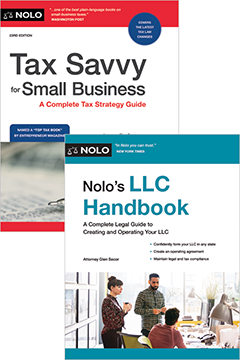Find out how to draft a joinder to add parties to an agreement.
Parties to a contract can use attachments to documents for a variety of reasons. However, a joinder is an attachment that parties use for the specific purpose of adding a signatory to an agreement.
When Would I Use a Joinder?
Joinders are used when an agreement is likely to have additional parties in the future. Often, the identities of those parties can't be determined at the time the agreement is signed.
For example, joinders are commonly used in connection with:
- shareholders' agreements for corporations
- operating agreements for limited liability companies, and
- partnership agreements for partnerships.
In each of these cases, the above-mentioned agreements might contemplate the possibility of bringing new owners into the company. A joinder is a quick and easy way to document the addition of a new stockholder, member, or partner (as applicable).
Joinders can also be useful in the context of subcontractor agreements. The underlying agreement (the original agreement) between a primary contractor (the general contractor) and its client might permit the general contractor to delegate some or all of its contractual responsibilities to a third party (the subcontractor). However, as a precondition to any delegations or assignments, the original agreement could require that any subcontractor must also sign a joinder to the original agreement confirming that it, too, will be subject to all of its terms and conditions.
Should I Use a Joinder or an Amendment?
Technically, joinders aren't amendments to the original agreement because they typically don't make any substantive changes to the terms of the agreement itself. Any changes to the body of the original agreement should be done either by:
- amending the contract (see our sample amendment to contract for an example to use), or
- restating the agreement completely.
A joinder is intended to be a simple document whose sole effect is to add an additional person or entity as a party to the original agreement and bind them to the terms of that agreement in their entirety. With the exception of instances where a formal, multi-party joinder agreement becomes necessary (as discussed below), a joinder saves time and effort because it only needs to be signed by the joining party in order to be effective.
For example, in the case of a corporation inviting a new shareholder into the business, only that stockholder would be required to sign the joinder in order to make it legally binding. Using a joinder avoids the burden of having the company track down the signatures of other stockholders.
Referencing the Joinder in the Original Agreement
The original agreement must contain a provision stating that any new parties to the agreement will be required to execute and deliver a joinder. Here's an example of a generic joinder provision:
In order for any person or entity (a "Person") to be added as a party to this Agreement (a "New Party"), such Person shall have executed and delivered a joinder to the Company substantially in the form of Exhibit [] attached hereto.
When drafting the original agreement, you or your legal counsel should include this provision in the most appropriate section, which could relate to the assignment of one party's rights under the contract to a third party, the delegation of responsibilities to a third party, the transfer of equity to a new owner, the admission of a new owner, or the like.
Sample Joinder
As indicated above, a form of the joinder should be attached as an exhibit to the original agreement. A new party to the agreement must simply fill out the joinder, sign it, and then deliver it to the company for their records.
Here's a sample of generic joinder language:
Pursuant to, and in accordance with, Section [_] of the [____________] Agreement, the New Party hereby acknowledges that such New Party has received and reviewed a complete copy of the [____________] Agreement and agrees that upon execution of this Joinder, such Person shall become a party to the [____________] Agreement and shall be fully bound by, and subject to, all of the covenants, terms and conditions of the [____________] Agreement as though an original party thereto.
Joinders With Special Provisions or Exceptions
On rare occasions, a new party to the original agreement has negotiated special terms that either vary from the terms of the original agreement or exclude the joining party from certain provisions. However, in these instances, it's still generally unnecessary to use a formal amendment.
The joinder can either:
- specifically state how the meaning of a particular provision should be adjusted with respect to such person, or
- identify those provisions of the original agreement that won't apply to the joining party.
However, unlike the standard joinder that only needs to be signed by the joining party, this type of attachment—because it affects the substance of the agreement itself—must also be executed by any party having a right to approve amendments to the original agreement. As such, this type of document would be considered a joinder agreement (as opposed to a joinder), and this joinder agreement would have to include signature blocks for the remaining signatories.
Maintaining Proper Records
Once signed and delivered, joinders are considered to be part and parcel of the original agreement itself. As such, any joinders should be delivered to the company's designated secretary or record keeper and properly maintained in the company's books and records, together with the original agreement.



